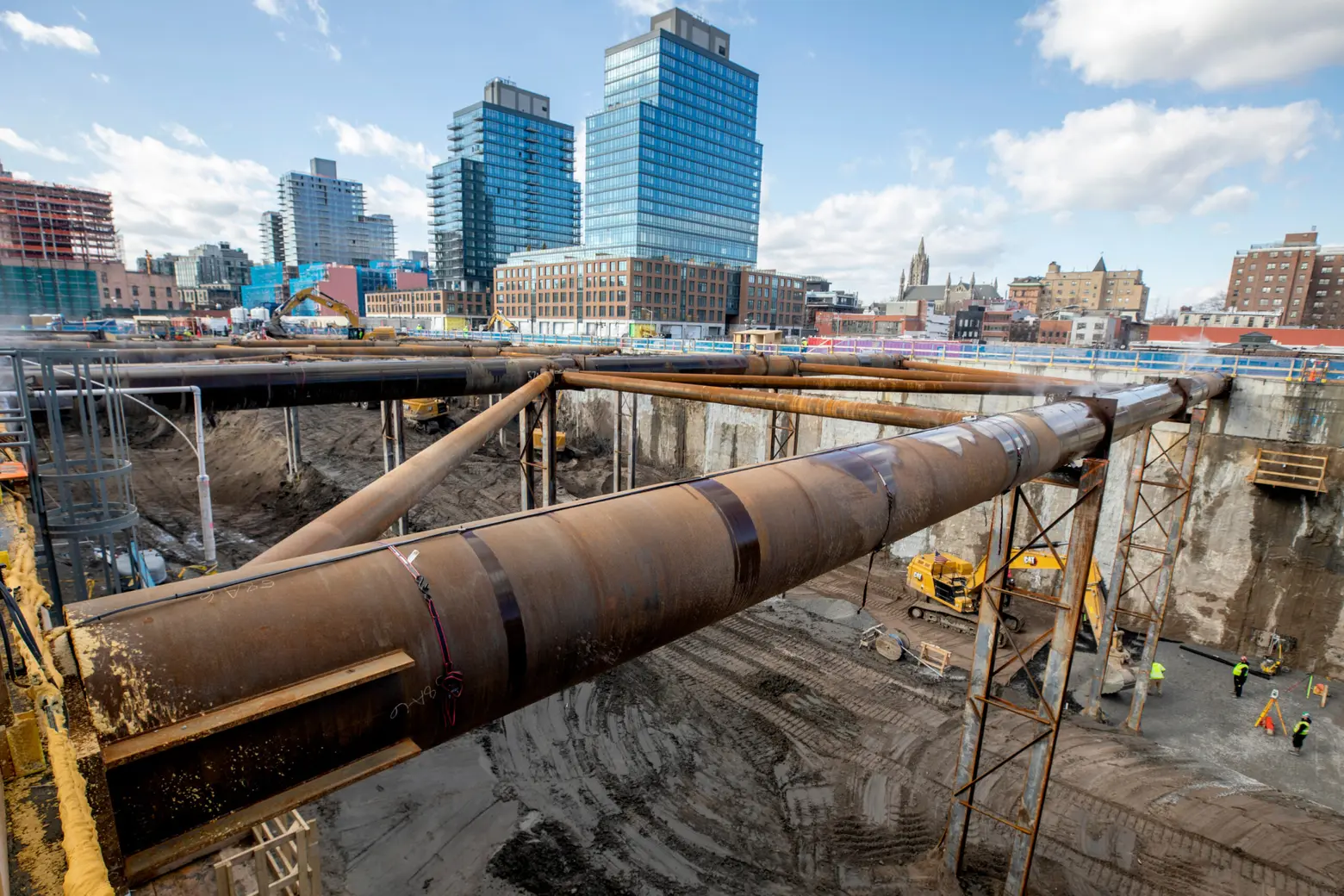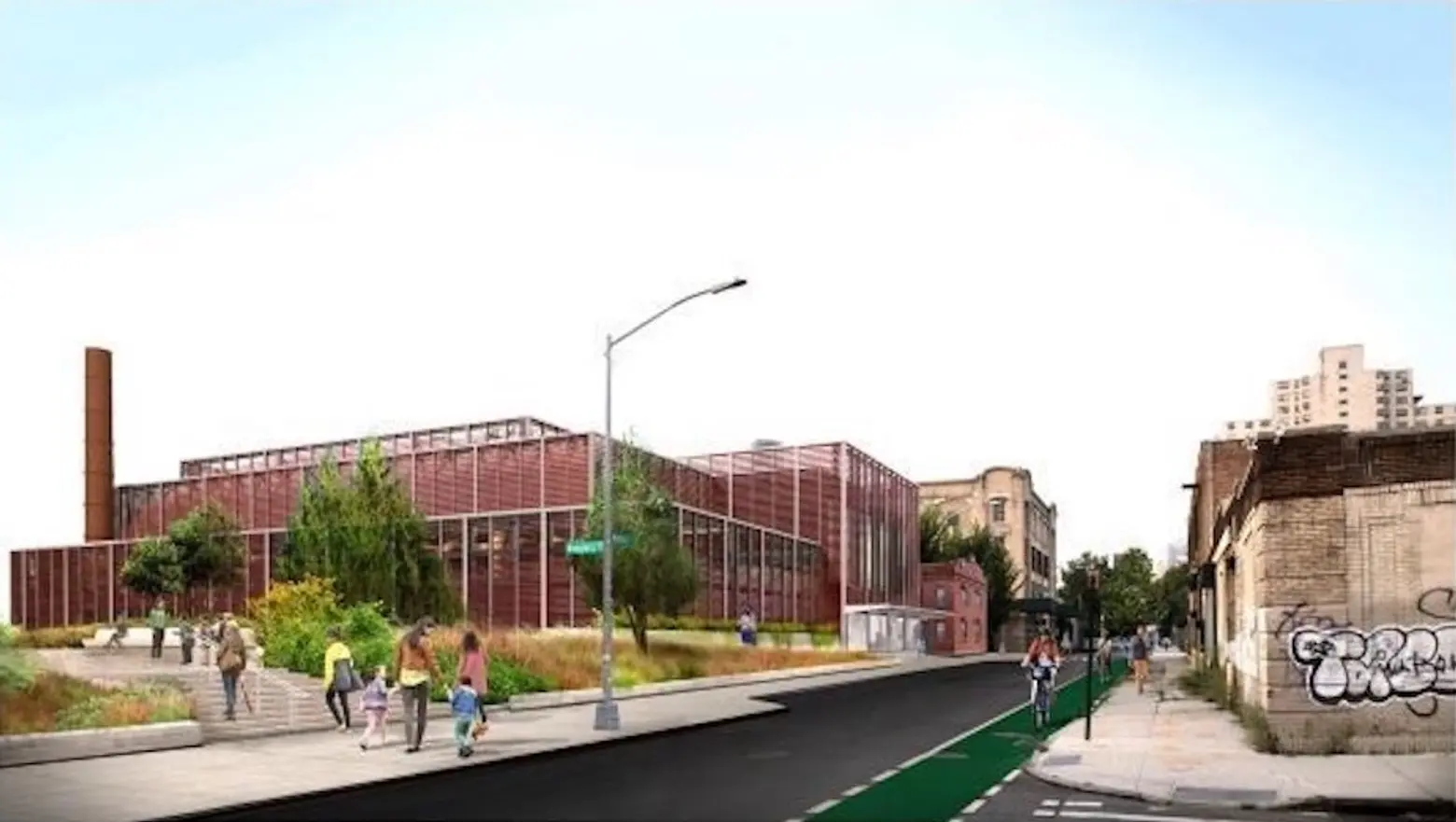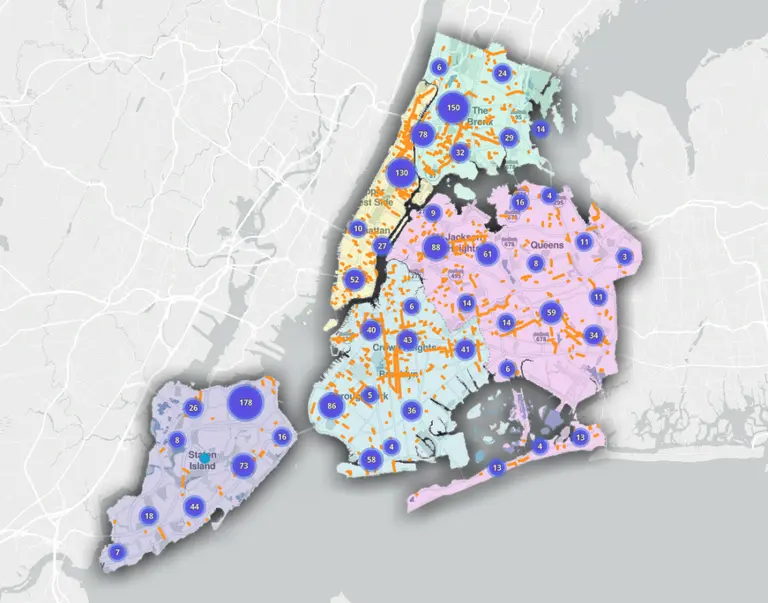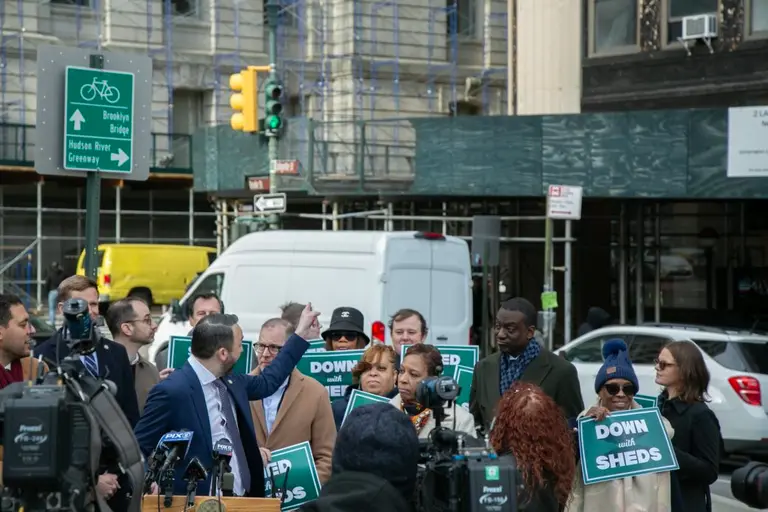Gowanus Canal cleanup advances with excavation for Red Hook tank

Credit: NYC Water on X
New York City is finally making headway in its long-delayed effort to clean up the Gowanus Canal. The Department of Environmental Protection (DEP) announced last week the completion of excavation for the Red Hook tank, an eight-million-gallon underground facility designed to capture sewage overflow that would otherwise spill into the canal during rainstorms. Construction on the tank, along with a smaller tank called Owls Head, began in March 2023. Work was expedited in December following complaints from residents about foul odors coming from the project site, as reported by Brooklyn Paper; the excavation was completed six months ahead of schedule.

“We are tremendously proud to have completed the excavation for the 8-million-gallon tank ahead of schedule, an achievement that is a testament to the dedication of everyone involved in this important project,” DEP Commissioner Rohit T. Aggarwala said.
“The creativity and innovation to speed up this stage of work demonstrates DEP’s commitment to the Gowanus community. As construction progresses, we remain focused on minimizing disruptions and ensuring the safety and well-being of the surrounding neighborhood.”
The Red Hook Tank, bordered by Nevins, Butler, and Degraw Streets, will feature 3.6 acres of public waterfront open space. Meanwhile, the Owls Head Tank, situated at the bend of the canal at Second Avenue and Sixth Street, will have a capacity of up to four million gallons of sewer overflow.
This second tank will also include its own headhouse and waterfront public space. The headhouse facilities will house the tank’s electrical and mechanical systems, along with odor control equipment and screens designed to filter debris from the sewer overflow, as 6sqft previously reported.

While the excavation was completed eight months ahead of schedule, the entire Gowanus Canal cleanup is long delayed. In 2010, the canal was designated a Superfund site—a location selected by the federal Environmental Protection Agency (EPA) for cleanup. The EPA has been working to remove 581,000 cubic yards of polluted sediment from the bottom of the canal and capping the bottom to prevent further pollution.
In 2014, the EPA ordered the city to build the tanks to keep sewer overflow out of the canal once the cleanup project is completed. Between 2014 and 2023, the city delayed the process several times, citing design discrepancies and budget issues, according to Brooklyn Paper.
In 2021, the EPA ordered the city to start building the tanks by 2023 in order to have the Owls Head facility operational by 2028 and the Red Hook facility operational by 2029.
City officials maintained that they were not defying DEP orders but argued that the mandates were impossible to meet. A few months later, as DEP constructed a perimeter wall at the Red Hook site, local residents began reporting foul odors emanating from the area.
Despite efforts by DEP to mitigate the issue with odor-suppressing foam and other countermeasures, complaints persisted. In response to residents’ concerns that the foul smell could mean exposure to harmful chemicals, the department eventually installed air monitoring stations.
The data collected from the monitors showed a low risk for long-term health risks, according to the EPA. The chemical that caused the odor was naphthalene, which was identified at safe levels for human exposure but is extremely smelly. However, even at safe levels, short-term exposure to the odor naphthalene can cause nausea and headaches, as reported by Brooklyn Paper.
During the final stage of excavation, no further odor or quality-of-life complaints were reported in connection with the DEP tank work site.
The next phase of the project is set to begin in May and continue through the summer of 2026. Excavation at the Owls Head site is expected to break ground this spring, with construction slated for completion in the summer of 2027. A timeline for “Phase 3,” which includes the new public parks and a headhouse at both sites, has yet to be determined.
“The completion of the excavation of the tank site brings us one step closer to a cleaner and greener Gowanus,” Gowanus Canal Conservancy Executive Director Andrea Parker said. “This stage was done ahead of schedule and with stringent environmental monitoring protocols, and we are optimistic for the same outcome for all the work that remains.”
“With this milestone, we are significantly closer to better water quality in the Canal and almost two acres of shared public space along a revitalized waterfront.”
RELATED:




























